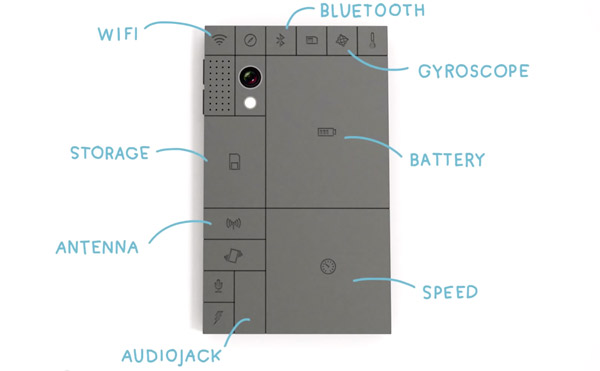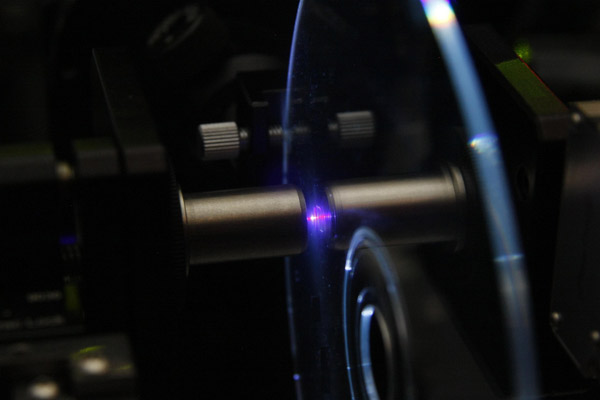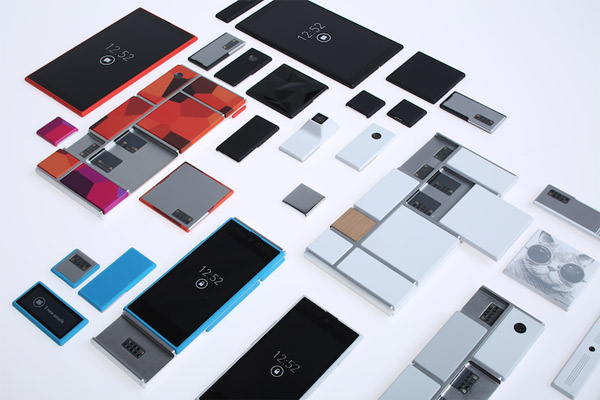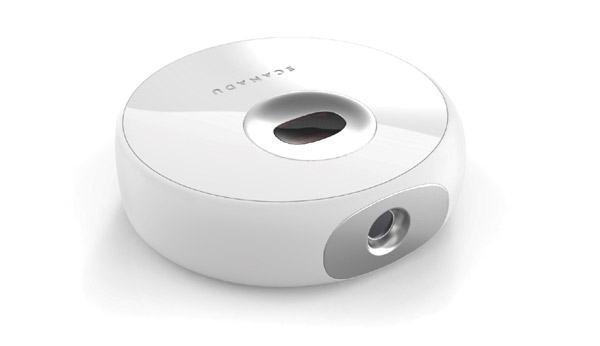Oh 2013, what an interesting year you’ve been.
This time of year always feels a bit odd. It’s usually a combination of apprehension about the slow, but inevitable forward trudging of time and the fact that I’m going to have to start writing “2014” whenever I sign something, even though I’ve just started to get used to writing “2013.” While most people getting ready with their retrospectives on the year, I’m going to take the time to think about the year to be.
2013 has been a pretty awesome year for science, what with the discovery of the Higgs Boson, discovery of earth-like exoplanets, and Col. Chris Hadfield recording “Space Oddity” in actual freakin space. It just makes me think about when we’re going to see real-world, commercial available repercussions of technology currently on the bleeding edge. Where’s my tricorder!? Well, fortunately it’s not too far off, really.
Here’s the lowdown on that and something cool tech I’d like to get my grubby mitts on in the coming year:
1. Self-Lacing Shoes
McFlyyyyy!! Like most of us, ever since I watched Back to the Future 2, I’ve been obsessed with freeze dried pizza, hoverboards, and, of course, self-lacing shoes. Power laces. They’re almost here! In 2011, Nike released their Nike Air Mag shoes in very limited quantity, as a charity fundraiser for the Michael J. Fox Foundation. They plan to go wide release in 2015. As far as I know, however, the shoes they released in 2011 didn’t have self-lacing on the feature list. They had some pretty cool flashing LEDs in the sole, but that’s it. Whether the 2015 version will be self-lacing is yet to be seen.
However, more than 3 years ago, an independent inventore, Blake Bevin, customized her own version of the self-lacing shoe: Power Laces.
She even showed up on Good Morning America and successfully funded a Kickstarter to get the shoes to market
Unfortunately, we have yet to see these things in retail stores. Judging by Bevin’s Blog (http://power-laces.com/), they suffered a few setbacks in development and manufacturing. And of course, life happens as well. Hopefully things start to look up and we’ll see something by the end of next year!
Why this excites me: I am notorious for tying my shoes once, when I first put them on, then forcing them onto my fat ham-feet every other time. Self-lacing shoes might save me a blister or two, maybe.
2. Invisibility Cloak
Invisibility, it’s one of the three super powers everyone always wants. Would you rather be able to fly, have super strength, or be invisible? Well, the days of having a Harry Potter style invisibility cloak might actually be right around the corner. Since about 2003, researchers have been hot on the tail of active camoflage, as exhibited by Japanese scientists in this video:
Who knows exactly how far they’ve come with this tech since then? Several camps are racing towards real-world usable active camoflage, including the US military and the University of Texas.
Why this excites me: I get to experience parties without having to experience parties. Go, introversion!
3. Tactile Touchscreens
I’ve always been a fan of Blackberry/Nokia E71 style tactile keyboards on smart devices. The switch to devices with touch-screen keyboards has never quite done well for me. I just can’t seem to reach the same accuracy and speed on a software keyboard as with a hardware one. This brings me to the Tactus touch screen tactile keyboard:
Cool, huh? I wish I had the chance to see what the “keys” feel like, but we’ve heard little from Tactus since their showing at CES 2013, as they have yet to incorporate their tech into any commercially available touch screen device. Here’s to hoping in 2014.
Why this excites me: Fat ham-fingers make it hard to type on tiny software buttons.
4. Holographic storage
Despite increasing capacities and data density, the hard disk drive has remained relatively unchanged since the 1960s. Hard metal spinning platters are written on by magnetic heads. And while such storage has gotten cheaper and cheaper, there still remains the problem of longevity (about 3-5 years for some drives). The data on all our hard disk drives will eventually give out to magnetic wear. What about SSDs (Solid State Drives) you say? Non-volatile flash memory, too, has a relatively short lifespan. The memory cells can only be re-written so many times before they become unreliable. That’s where holographic storage comes in. While its main use seems to be archival, because the medium on which the data is currently written becomes inert once data is stored on it, it has theoretical life span of 50 years.
Too, because of the way data is recorded and retrieved (by two lasers, which, by varying the angle one hits the medium, can read different layers of holographs written on top of each other, data density could be much, much, higher than in traditional hard disk drives. Right now, they’re comparable to their traditional cousins, at about 1 terabyte in 3 square inches of writable area, but the ability to layer data makes the data ceiling much higher.
Unfortunately, only one company, HVault is offering any kind of product, as the previous champion of the medium, InPhase, called it quits a couple of years ago. Other companies, however, are still continuing their research into the format.
Why this excites me: While right now, the technology writes on to BluRay-like disk media, it could theoretically be any shape with available flat surfaces. Like a cube. Data cubes. Holographic data cubes. Fantastic.

5. 3D Printers
Yes, consumer-grade 3D printers like the ones made by Makerbot are on the market, but the price tags are still high enough to put them in the realm of your one childhood buddy who had the only NeoGeo home console in your entire circle of friends. Soon enough, a drop in price will render them more commonplace. Imagine being able to design and create your own tabletop miniatures. Missing a gear from that wind up toy you just had to take apart to find out how it worked? (Sorry Mom & Dad) Print a new one. Lose a tiny part of your Perfect Grade Wing Zero gunpla? Print a new one. Making your own custom action figures, dolls, or customize cases for your electronics is totally within the realm of possibility.
http://www.youtube.com/watch?v=V_UUK-1DNW0
The real exciting stuff, though, is happening on the frontiers of this technology, particularly in its medical applications.
Yup, printing organs with embryonic stem cells. No need for waiting months or years on donor lists for a match. Transplants can take place, as soon as it takes to print a new kidney, or whatever. Yes, the tech is still in its relative infancy, as they’re just now figuring out how to use the technology to create the vascular component of these organs, the blood vessel network, that is required to sustain the newly printed organ.
Additionally, some researchers are making headway bionic organs, such as this 3D printed ear with embedded nanoelectronics.
Why this excites me: It’s like that episode of Star Trek: TNG where Worf had that warehouse accident and they had to use the replicator to make him a new spinal cord.
6. Google Glass
Ever since the first “proof of concept” video, back when it was still called “Project Glass,” the geek world has been afire with speculation.
Is it really going to be this seamless? Will it be able to do all these things? Am I going to have to get something implanted in my eye? In my head? Because, I’ll do it. I’ll do that shit. I’ve wanted to do it ever since talk of the 80GB head-drive in Johnny Mnemonic.
http://www.youtube.com/watch?v=S0Ak4N36CMo
Still, people seem to be a bit confused as to what Google Glass is exactly. It’s just another way to interact with the internet, the information superhighway, the world wide web. This man in the video below puts it quite succinctly: Just like there are Android based phones and Android tablets, Google Glass is an Android-based wearable, voice activated, mini-computer. It provides a HUD (Heads Up Display) through a prism situated above the right eye, and connects to the internet via your Bluetooth-enabled smartphone.
Like Marques says, the Google Glass Explorer units that are currently out in the wild aren’t yet retail units. It’s a real-world (relatively) closed beta. Much work is left to be done in the development of the final units, both on the software and hardware side. Hopefully by then, which is hopefully in 2014, the price tag will drop from the prohibitively expensive $1500.
Why this excites me: Once the unit hits retail, I’m sure third party developers are going to have a field day. If all is right with the world, one of them will re-skin the GUI so I can live out my lifelong dream of being a Terminator.

7. Modular Smartphones

Electronic waste – it’s one ramification of our societal quest for the newest, latest, and greatest in gadgetry that people rather few people think about. People toss things like their old DVD players, computers, and cell phones every day. If we just take into consideration cell phones, which last maybe 2 years (the length between contract upgrades) for some people, they must make up a good chunk for the world’s e-waste.
Now, why do people get rid of cell phones. Mostly likely it’s because of the aging technology, or their phones simply break.
That’s where the idea of a modular smartphones comes into play. What if, when part of your cell phone breaks, like the camera or the speaker, or the screen, you can replace it with little hassle? What if you’d like to upgrade your phone’s camera, or RAM, or processor? Unfortunately, today’s smartphones are not, for the most part, user serviceable. Even then, upgrading the wireless chip or adding NFC capabilities to your phone would take some pretty deep technical knowhow.
Enter, David Hakken’s Phonebloks concept:
When Hakken put his idea out there through the above video, he was approached by Motorola, who had apparently been working on their own modular smartphone concept, Project Ara.
Hakken and Motorola apparently met and hit it off pretty well. Hopefully they’ll make beautiful cellphone babies together. It seems that Hakken expects to have a basic prototype by the end of this year, at which point he’ll be starting a Kickstarter campaign to fund development and manufacturing of a production model. Motorola seems too, to be moving forward with their development, and is currently gathering feedback from the masses via Dscout.
Why this excites me: Having a modular smartphone speaks to the PC builder in me. I can customize a build to cater to my specific needs. For example, if a great camera is important to me (which it is), I can go for that, and decrease the storage portion of the phone, since I tend to use cloud storage. When that camera gets obsolete, I can upgrade to a sexier 12MP one. Snapdragon S4 feeling sluggish? Upgrade to the 600.
8. Tricorder
I often joke about how my Nexus 4 is basically a tricorder, especially with the SmartTools app. But, it doesn’t actually record all the nifty stuff like real-time atmospheric pressure or temperature, nor can it monitor and record a person’s vital signs.
Fear not, though, people like Peter Jansen, Ph.D. are working on making the tricorder a reality. He is currently working on a 4th generation model of his science tricorder, a journey he is documenting at The Tricorder Project.
If his Mark IV has a built-in mass spectrometer, I am so on board.
On the medical front, a company called Scanadu launched an Indiegogo campaign for a “medical tricorder” called the Scanadu Scout:
http://www.youtube.com/watch?v=rKCeoiRhVuI
Heart rate, blood pressure, oxygen levels, ECG, temperature, and respiratory rate are all measured by holding the hand scanner to the temple, and the data is sent to a paired smartphone. It’s so… Stark Trek: TNG.
Why I’m excited: It’s a freakin tricorder, that’s why. It’s a multimeter, but even better. Hmm. If they could incorporate a multimeter into the tricorder, that would be ideal.



